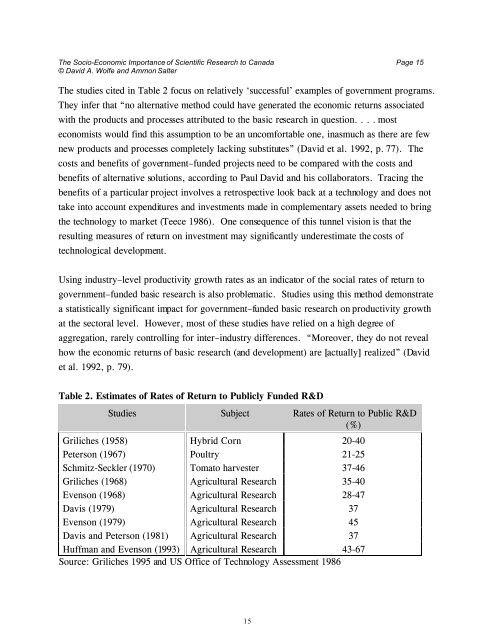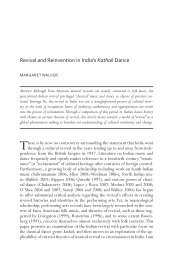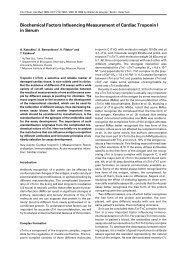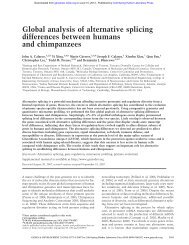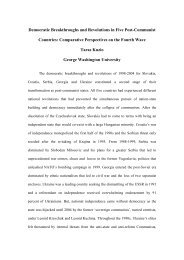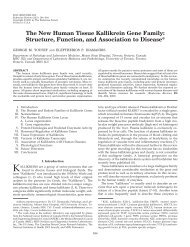The Socio-Economic Importance of Scientific Research To Canada
The Socio-Economic Importance of Scientific Research To Canada
The Socio-Economic Importance of Scientific Research To Canada
Create successful ePaper yourself
Turn your PDF publications into a flip-book with our unique Google optimized e-Paper software.
<strong>The</strong> <strong>Socio</strong>-<strong>Economic</strong> <strong>Importance</strong> <strong>of</strong> <strong>Scientific</strong> <strong>Research</strong> to <strong>Canada</strong> Page 15© David A. Wolfe and Ammon Salter<strong>The</strong> studies cited in Table 2 focus on relatively ‘successful’ examples <strong>of</strong> government programs.<strong>The</strong>y infer that “no alternative method could have generated the economic returns associatedwith the products and processes attributed to the basic research in question. . . . mosteconomists would find this assumption to be an uncomfortable one, inasmuch as there are fewnew products and processes completely lacking substitutes” (David et al. 1992, p. 77). <strong>The</strong>costs and benefits <strong>of</strong> government–funded projects need to be compared with the costs andbenefits <strong>of</strong> alternative solutions, according to Paul David and his collaborators. Tracing thebenefits <strong>of</strong> a particular project involves a retrospective look back at a technology and does nottake into account expenditures and investments made in complementary assets needed to bringthe technology to market (Teece 1986). One consequence <strong>of</strong> this tunnel vision is that theresulting measures <strong>of</strong> return on investment may significantly underestimate the costs <strong>of</strong>technological development.Using industry–level productivity growth rates as an indicator <strong>of</strong> the social rates <strong>of</strong> return togovernment–funded basic research is also problematic. Studies using this method demonstratea statistically significant impact for government–funded basic research on productivity growthat the sectoral level. However, most <strong>of</strong> these studies have relied on a high degree <strong>of</strong>aggregation, rarely controlling for inter–industry differences. “Moreover, they do not revealhow the economic returns <strong>of</strong> basic research (and development) are [actually] realized” (Davidet al. 1992, p. 79).Table 2. Estimates <strong>of</strong> Rates <strong>of</strong> Return to Publicly Funded R&DStudies Subject Rates <strong>of</strong> Return to Public R&D(%)Griliches (1958) Hybrid Corn 20-40Peterson (1967) Poultry 21-25Schmitz-Seckler (1970) <strong>To</strong>mato harvester 37-46Griliches (1968) Agricultural <strong>Research</strong> 35-40Evenson (1968) Agricultural <strong>Research</strong> 28-47Davis (1979) Agricultural <strong>Research</strong> 37Evenson (1979) Agricultural <strong>Research</strong> 45Davis and Peterson (1981) Agricultural <strong>Research</strong> 37Huffman and Evenson (1993) Agricultural <strong>Research</strong> 43-67Source: Griliches 1995 and US Office <strong>of</strong> Technology Assessment 198615


